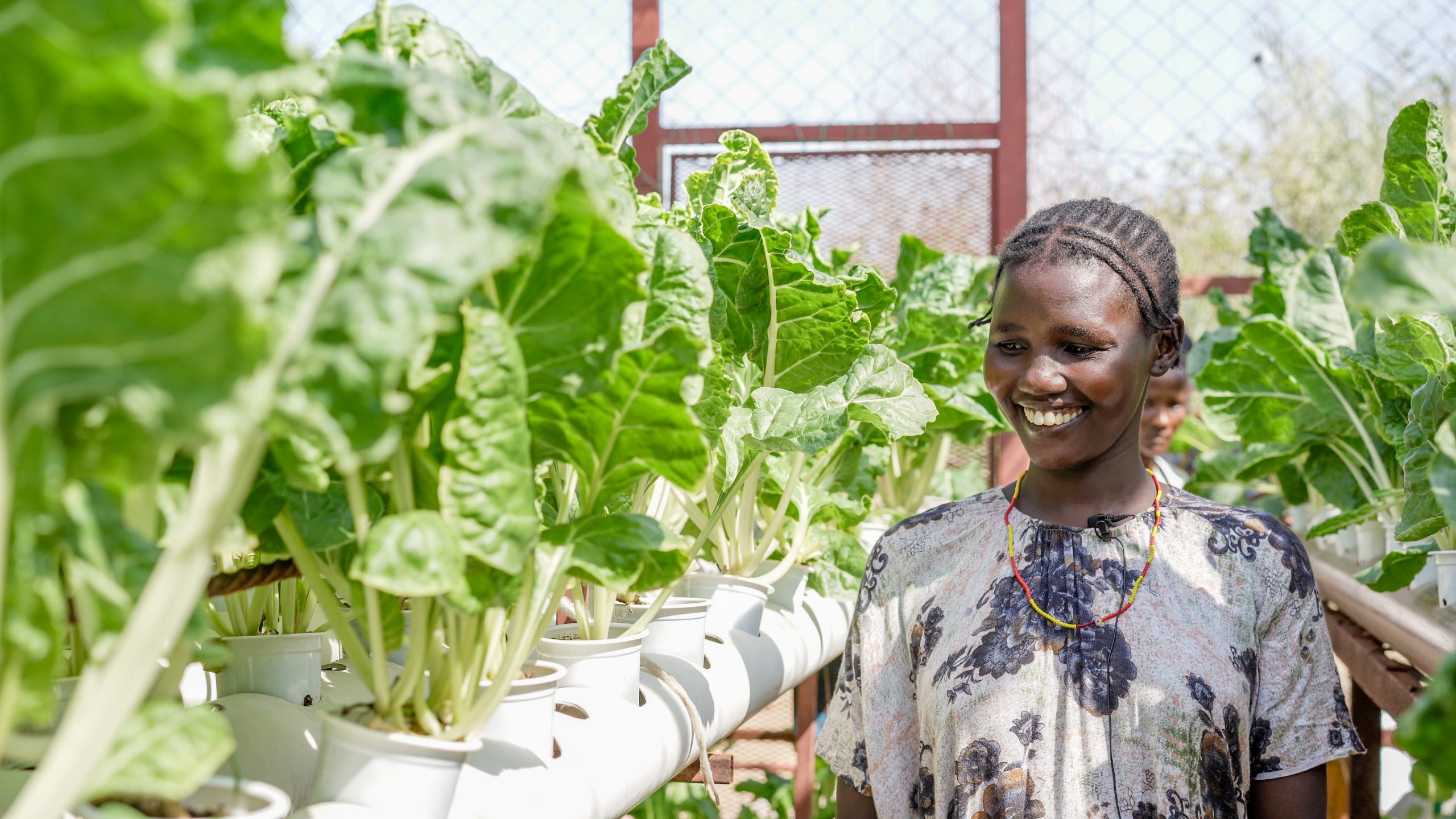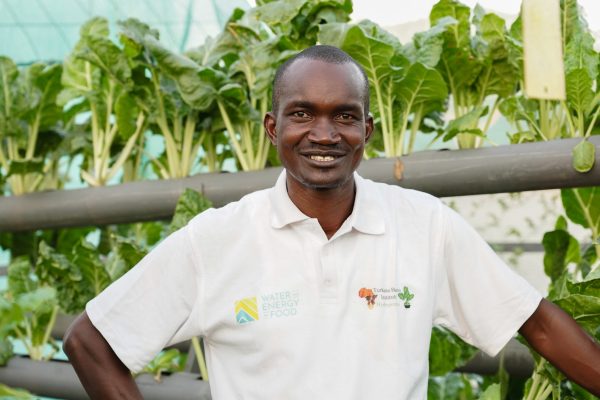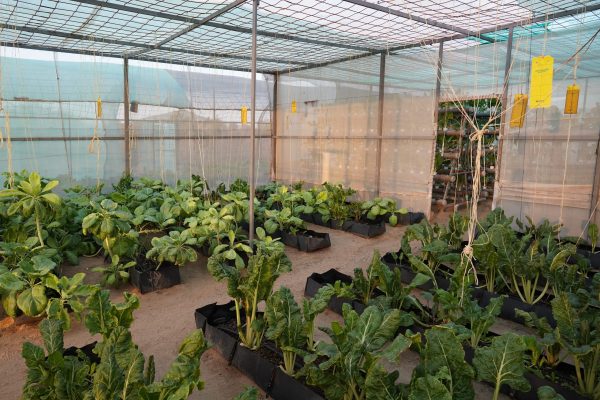It is finally raining in Kenya again, and even the Northern Regions around Lake Turkana receive some of it. So far, more drops have fallen in the first five months of this year (231 mm until early May) than in the whole of 2022 (173 mm). Fresh greens are sprouting everywhere in the normally sparse environment and transforming the landscape. The surviving cattle and goats are finding more food than ever, while grazing in between the skeletons and cadavers of animals that died due to the drought in 2022. For the communities living in the region around Lake Turkana, the rainfall is a big relief after many missing rainy seasons.
Plant growth through innovative application of solar-powered, reverse osmosis systems
In this environment, the Turkana Basin Institute (TBI) operates a research facility close to Ileret, on the eastern side of Lake Turkana, near the Ethiopian border. From October 2020 to December 2022, the Water and Energy for Food (WE4F) East Africa Regional Innovation Hub collaborated with TBI and contributed to another type of transformation.
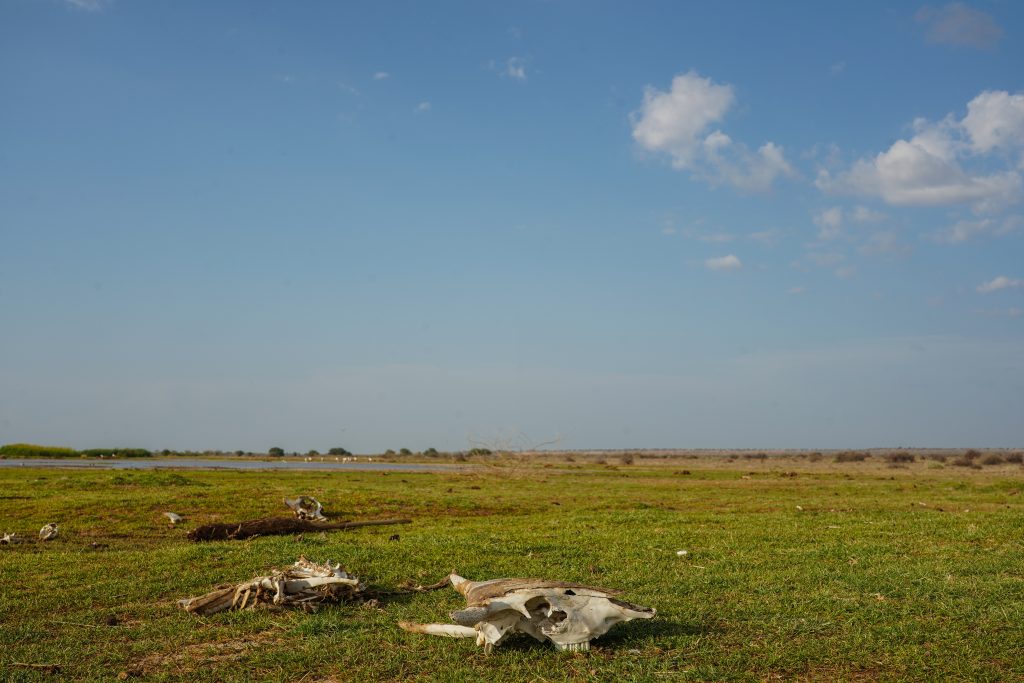
The surrounding area (Lake Turkana) littered with animal carcasses.
TBI is located among arid and semi-arid lands, where rainfall is extremely limited, but serves as the driver of all plant growth. Thanks to the joint project and partnership with WE4F, TBI can now grow plants without relying on the rains. Heavily mineralized water is pumped up from a borehole with solar-powered pumps, into a reverse osmosis system that is also run by solar energy. The reverse osmosis system replaced a diesel-run system that would need 1 litre of diesel to treat 166 litres of water. Now, fresh water is produced in a climate-friendly way – a total of 3,825,000 litres during the project period.
The water is used by TBI and shared with the Ileret local community. It’s a great relief for the community, especially during the heavy drought when over 500,000 litres of water were delivered to different water distribution points.
Hydroponic farming: the benefits of water-efficient, soilless forms of agriculture
Within TBI, the water is in part used for hydroponics to produce fresh vegetables. This soilless form of agriculture is the only way to reliably produce crops in arid and semi-arid lands. It is a very water-efficient way of farming, with plants absorbing all of their required nutrients from a special solution that circulates around the roots.
As part of the project, greenhouses have been constructed on 825 m². Within the greenhouses, a variety of nutritious crops are growing in different hydroponic systems: spinach, kale, tomatoes, amaranthus, lettuce, cabbage, beetroot, chillies, and even watermelon. As of December 2022, 3,500 kg of fresh greens were produced. Half of this amount was harvested and brought home by 12 trainees who previously received in-depth training on hydroponic agriculture. They are responsible for crop production in their greenhouses at TBI’s compound. Not only can the trainees now support their families with fresh vegetables, but also they can sell their harvest in the village and generate an income.
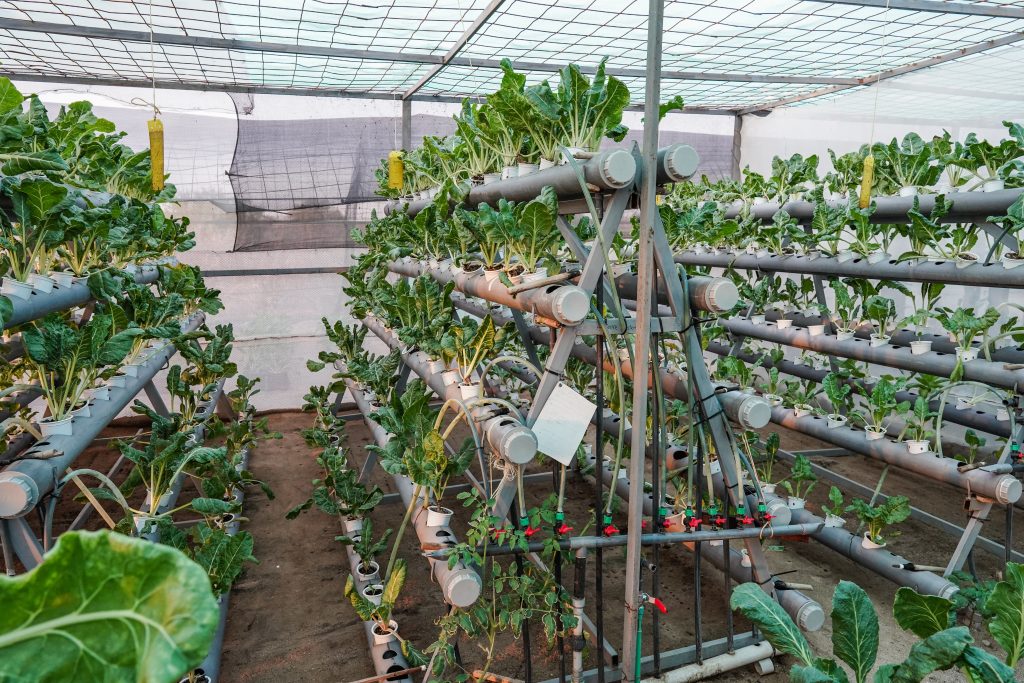
A hydroponic system inside a greenhouse on the premises of TBI.
Retrospectively, the partnership between GIZ-WE4F and TBI has brought about significant transformation at the institute and the region around Ileret. Freshwater, the lifeline of the region, is now reliably produced with solar technologies. For the first time, fresh vegetables are available within the village, and young entrepreneurs are taking up hydroponic farming. To scale up the lessons learned, WE4F and TBI, together with other hydroponic stakeholders, are currently working on a practitioner’s guide for hydroponic agriculture in Arid and Semi-Arid Lands.
WE4F is looking forward for the further development of the institute and how the project activities keep yielding positive results, even though the partnership ended. It the years to come there will be more experience on the introduction of this new farming method in the far North, especially on how it is taken up by the local communities.

